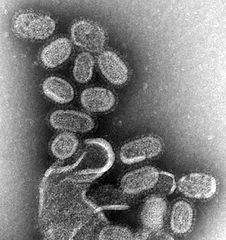Jan 28, 2008
Some Progress on Universal Influenza Vaccine
Posted by Michael Graham Richard in categories: biological, biotech/medical
According to ScienceDaily:
The British-American biotech company Acambis reports the successful conclusion of Phase I trials of the universal flu vaccine in humans. The universal influenza vaccine has been pioneered by researchers from VIB and Ghent University. This vaccine is intended to provide protection against all ‘A’ strains of the virus that causes human influenza, including pandemic strains. Therefore, this vaccine will not need to be renewed annually.
 What would make this new vaccine different from the ones already available is that it would target M2e, a conserved region of influenza “A” strains. Since that part doesn’t constantly mutate and about 2/3 of seasonal epidemics and all pandemics are due to type “A” strains, it could be a very efficient weapon against repeats of the “Spanish Flu” (1918−1919) that killed at least 50 million people worldwide. Only the future will tell if phase II and III trials are successful.
What would make this new vaccine different from the ones already available is that it would target M2e, a conserved region of influenza “A” strains. Since that part doesn’t constantly mutate and about 2/3 of seasonal epidemics and all pandemics are due to type “A” strains, it could be a very efficient weapon against repeats of the “Spanish Flu” (1918−1919) that killed at least 50 million people worldwide. Only the future will tell if phase II and III trials are successful.
You can learn more about the Lifeboat Foundation BioShield program here.








